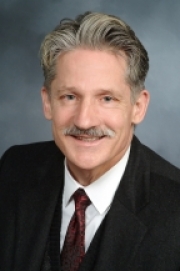With the help of the National Football League, Weill Cornell investigators are using nuclear medicine and advanced MRI techniques to diagnose dangerous head injuries in athletes immediately after they take place, even before damage to the brain is visible. The potential breakthrough technique may overcome one of the fundamental barriers to diagnosing concussions: There are no good ways to authoritatively confirm the injury.

Dr. P. David "Moze" Mozley
The technology is promising enough that Dr. P. David Mozley, director of nuclear medicine at Weill Cornell, and his team are among the 16 winners of the GE & NFL Head Health Challenge, which provides grants from General Electric and the NFL to better understand early-stage traumatic brain injuries and improve brain protection. The group was selected from more than 400 applications.
The nuclear medicine technique is conceptually simple. When the skull is hit hard enough to cause damage, the brain's initial response is to release a chemical called arachidonic acid (AA). AA goes on to form other chemicals that can cause either inflammation and cell death, or chemicals that lead to healing. By tagging AA with a radioactive tracer that can be seen on a PET scan, a team of doctors, neuroscientists, and mathematicians can determine whether the brain is using excess amounts of the chemical. Injured areas of the brain use as much as 300 percent more AA than normal, and will look bright on PET scans.
The Weill Cornell team will be comparing scans from former professional boxers with known, long-term head injuries against those of NFL players in whom a concussion is suspected. Bodybuilders, who have an NFL physique but none of the sport's traumatic injuries, will serve as a second control group.
Should the technique work, it could eventually change the way concussions are diagnosed by providing an authoritative test that gives a yes-or-no answer as to whether a concussion has occurred. "The idea is really simple, but it's never been done before," says Dr. Mozley, who is also a professor of radiology at Weill Cornell.
Another large team of Weill Cornell physicians, physicists, neuroscientists, and technologists will also measure some of the consequences of AA activation. Led by Professor of Physics in Radiology Dr. Dikoma Shungu and his clinical partner, Dr. M. Flint Beal, a professor of neuroscience and neurology, the MRI team will perform an examination that can be completed in 20 minutes on an MRI scanner like those in most community hospitals.
The Holy Grail in the field would be a simple blood test that anyone from parents to NFL team physicians could use on the sidelines as soon as a concussion is suspected — a test that a number of companies are racing to develop. The nuclear medicine technique is too expensive and labor intensive to be used routinely, but it could serve as the gold standard against which other, cheaper and more accessible tests could be validated as accurate enough for on-field use.
Another long-term goal of the research is to accelerate drug development by pharmaceutical companies that need an early readout on whether an experimental medication is having an impact on the brain.
"Moze," as Dr. Mozley is known, does not have a lifelong interest in sports-related head injuries, but he's aligned himself with Weill Cornell faculty who are luminaries in the field, including Dr. Roger Hartl, a team physician for the New York Giants, Dr. Kenneth Perrine, a neuropsychologist for the New York Jets and the New York Islanders, Dr. Robert Zimmerman, a radiologist who has spent more than 25 years leading national efforts to study head trauma using MRI, and Dr. Barry Jordan, chief medical officer of the New York Athletic Commission and team physician for U.S.A. Boxing.
"Me, I'm just a photographer at this wedding," Dr. Mozley said. "But I know how to develop the film."

